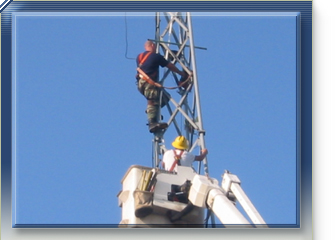Nature of Challenge
Excerpt from "Hastily Formed Networks" by Peter Denning
The ability to form multi-organizational networks rapidly is crucial to humanitarian aid, disaster relief, and large urgent projects. Designing and implementing the network's conversation space is the central Challenge.
On Sept. 11, 2001, terrorists
attacked the World Trade
Center, taking 2,749 lives.
The attack resulted in severe economic
impact, especially to airlines,
and a stock market loss of
$1.2 trillion. On Dec. 26, 2004,
a tsunami from a 9.1 earthquake
overran the shores of many countries
along the vast rim of the
Indian Ocean. Over 283,000 people
died. On Aug. 29, 2005, Katrina,
a category-5 hurricane,
knocked out electric and communication
infrastructure over
90,000 square miles of Louisiana
and Mississippi and displaced 1.5
million people. Six months later,
New Orleans still housed fewer
than 100,000 of its original 1.2
million residents. On Oct. 8,
2005, a magnitude-7.6 earthquake
devastated the Kashmir region of
Pakistan, killing over 87,000 people.
Besides being unexpected
major disasters, these events had
one other common feature: they
all involved hastily formed networks
that quickly mobilized,
organized, and coordinated massive
humanitarian responses.
The severity of these disasters
drove home an important point:
the quality of the response
depended not on response planning
or on new equipment, but
on the quality of the network
that came together to provide
relief. How quickly were voice
and data communications
restored? How well did the many
players from disparate organizations
collaborate? How effectively
did the network deliver help to
the victims? These incidents
demonstrated sharp differences in
the quality of the hastily formed
network (HFN), which directly
affected the effectiveness of the
response. Noting that these networks
almost always involve military,
civilian government, and
non-government organizations,
the U.S. Departments of Defense
and Homeland Security have made it a priority to learn how to
effectively assemble HFNs. We
coined the term at the Naval
Postgraduate School in 2004.
The lessons learned from the
networks involving government
carry directly into private settings.
They will benefit any urgent network
of multiple organizations
with no common authority that
must cooperate and collaborate.
Hastily formed networks is an
area where advanced networking
technology and human organization
issues meet. They can work
well together, or they can clash.
Our purpose here is to give an
overview of this critical area and
the challenges it offers to computing
professionals.
Read full document here: Hastily Formed Networks (PDF, 224KB)
